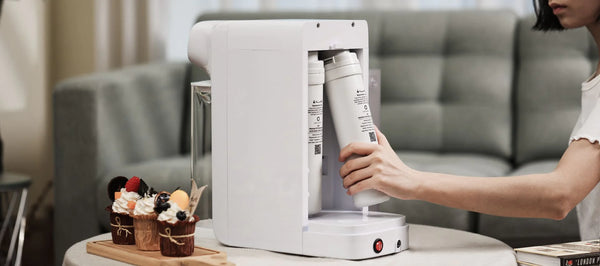Water is essential for sustaining life, and the quality of the water we consume plays a critical role in maintaining our health and well-being. Total Dissolved Solids (TDS) are a significant factor affecting the quality, taste, and health of the water you drink. In this guide, we will dive into what TDS is, what it means, and how to measure and reduce it to ensure a healthier and more enjoyable drinking water experience.
What is TDS?
Total Dissolved Solids (TDS) refers to a wide range of substances that can dissolve in water, including minerals like calcium, magnesium, sodium, and potassium, as well as various other anions and organic matter. TDS is measured in parts per million (ppm) or milligrams per liter (mg/L).
A simple way to visualize TDS is to think of it as everything that remains in water once all the visible particles have been removed. This includes dissolved minerals, salts, and other compounds that contribute to the overall composition of the water.

Importance of TDS in Drinking Water
While some levels of TDS are normal and even beneficial for water, excessively high TDS levels can have negative effects on water quality, taste, and human health. High TDS in water can lead to a metallic or salty taste, affect the clarity of water, and compromise its odor. Furthermore, elevated TDS may indicate the presence of harmful contaminants that could pose health risks when consumed over an extended period.
Understanding and monitoring TDS in drinking water is crucial for ensuring that the water you and your family consume is of the highest quality.

Using TDS Measurement Tools at Home
To ensure the quality of your drinking water, it's essential to monitor TDS levels regularly. Fortunately, there are user-friendly TDS measurement tools available for home use. One such device is a TDS meter, a handheld gadget that provides a quick and accurate reading of the TDS concentration in water.
To measure TDS at home, follow these simple steps:
- Turn on the TDS meter and ensure that the probes are clean.
- Submerge the probes into the water sample up to the specified level.
- Wait for the reading to stabilize, usually within a few seconds.
- Record the TDS value displayed on the meter.
Regular monitoring of TDS levels at home allows you to take proactive steps in maintaining water quality. If the TDS levels consistently exceed recommended limits, it may be time to explore methods to reduce TDS.

Quick Methods for Improving Water Quality
Reducing TDS in drinking water is essential for maintaining its purity and ensuring a pleasant taste. Here are some quick tips to help improve water quality at home:
- Reverse Osmosis (RO) Filtration: Consider investing in a reliable water filtration system like the Airthereal Pristine Lite3 RO Countertop Instant Filtered Water Dispenser. This product uses reverse osmosis technology to remove impurities, contaminants, and excess minerals, resulting in cleaner and healthier drinking water.
- Boiling: Boiling water is an effective method to reduce bacterial contamination, but it may not significantly lower TDS levels. It is more suitable for addressing microbial concerns rather than mineral content.
- Distillation: Distillation involves heating water to create steam, which is then condensed back into liquid form, leaving impurities behind. While effective, distillation can be energy-intensive and may remove beneficial minerals from your drinking water.
- Water Softeners: These devices exchange calcium and magnesium ions with sodium ions, reducing water hardness. While water softeners can lower TDS, they are specifically designed to address hardness and may not target other dissolved solids.
- Activated Carbon Filtration: Activated carbon filters are effective in removing certain organic compounds, chlorine, and odors. While they may not significantly reduce TDS, they contribute to an overall improvement in water taste. In addition to an RO filter, the Airthereal Pristine Lite3 also has a PCB filter containing an activated charcoal block, adding an extra level to improving the quality of the water you drink.
Conclusion
Ensuring the purity of drinking water directly impacts your health and well-being. Monitoring TDS levels at home using user-friendly tools empowers you to take control of your water quality, and therefore, your health.
By investing in advanced filtration systems like the Airthereal Pristine Lite3 RO Countertop Instant Filtered Water Dispenser, everyone can enjoy cleaner, healthier, and better-tasting water. Regular water checks, combined with these proactive measures, contribute to a lifestyle that prioritizes the importance of high-quality drinking water for a healthier future.





